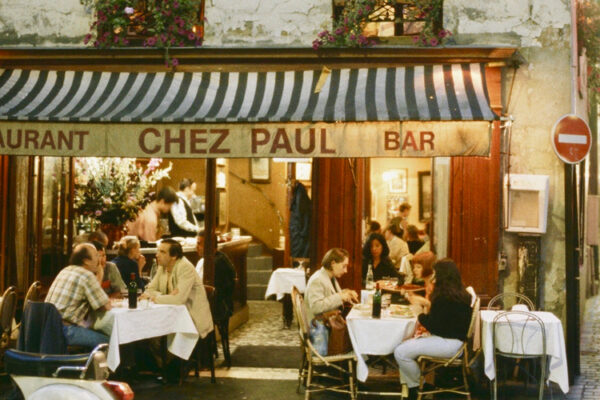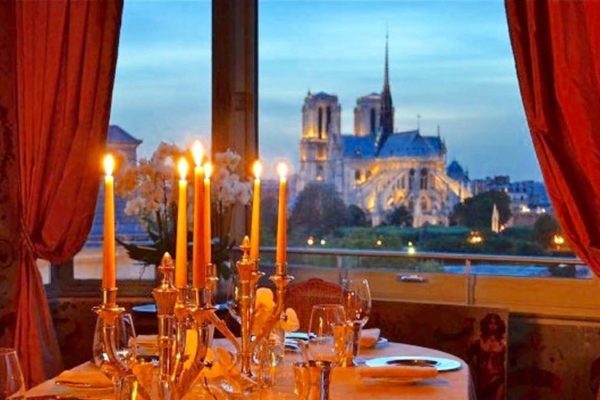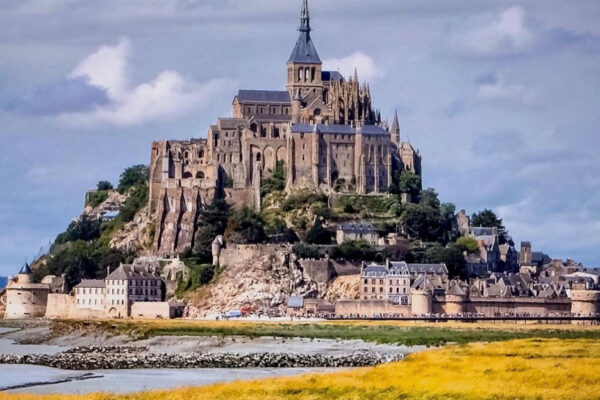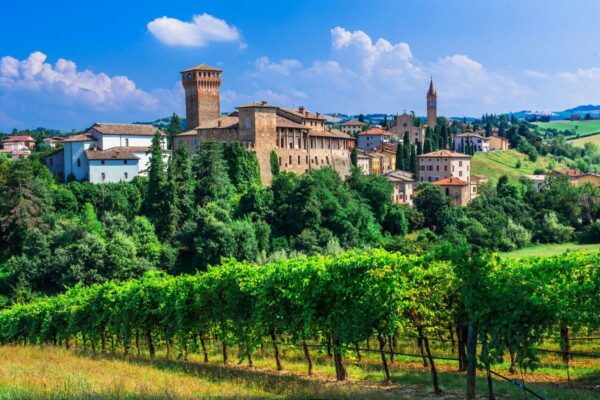A Winter Weekend in Versailles
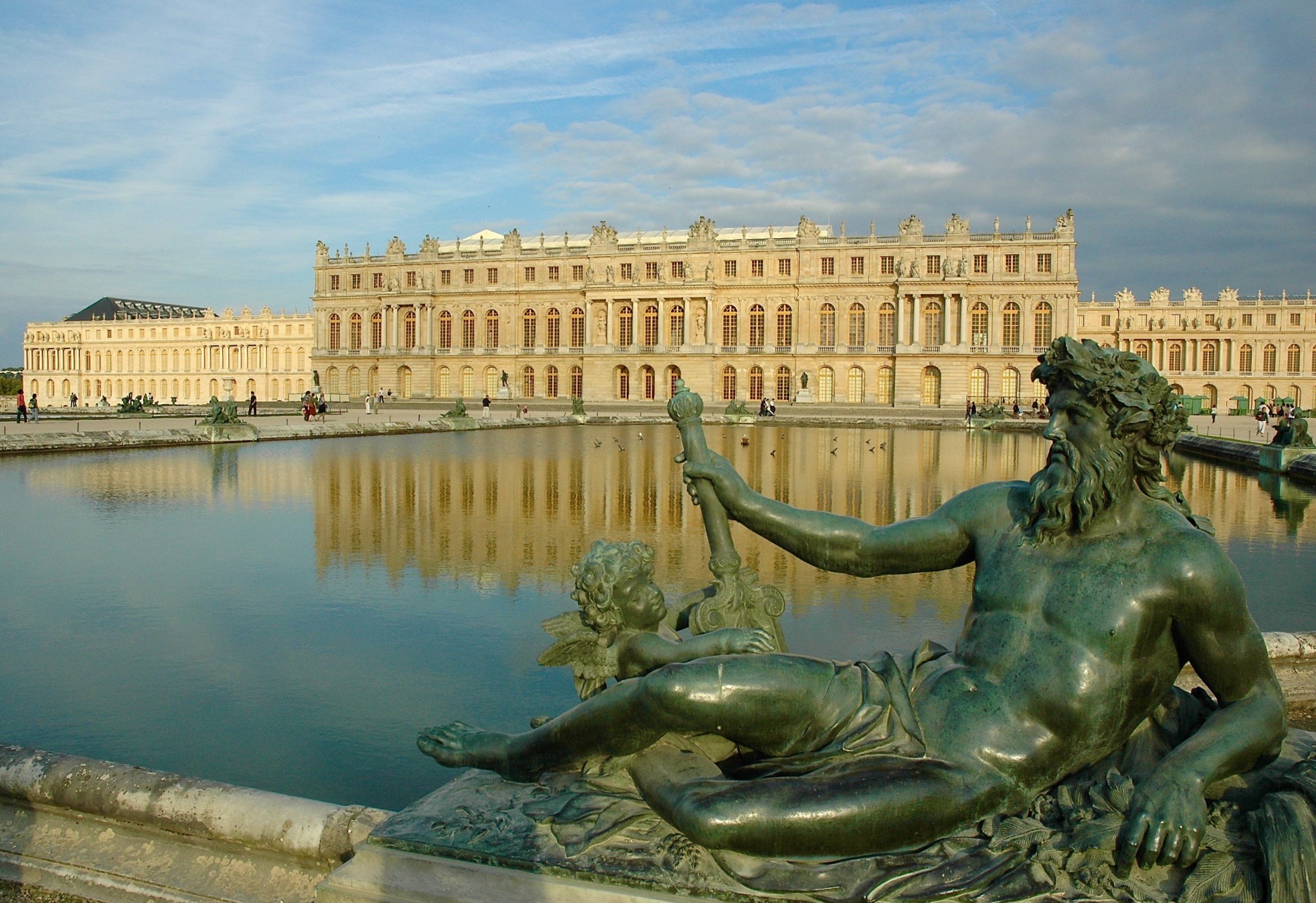
As one of the world’s most renowned historical sites, Château de Versailles attracts an astonishing 10 million visitors annually or approximately 35,000 – 40,000 persons a day during the regular season. We’ve experienced the crowds on previous trips, so this time around, we decided to catch the grand Château off season.
Early the first day, bundled against the winter cold, we essentially have the magnificent grounds to ourselves — all 800 hectares (2,000 acres). Gone, of course, are the lavish flower beds visible in warmer months. But, the intricate landscapes, water features, sculptures and endless topiaries more than compensate.
La Petit Venise, a small café we’ve enjoyed on previous visits, is open. But this morning, instead of hundreds of diners, there are only a few groundskeepers. We chat with them over delicious omelets and pastry. Afterwards, we spot a tram without a mile-long queue! The lonely driver waves us on board and the three of us take off.
Our first stop is the Grand Trianon. A small palace, at least in comparison to Versailles, with pink marble panels adorning the elegant facades. It was here that Louis XIV conducted his most private affairs, which often included Madame de Maintenon…although not necessarily.
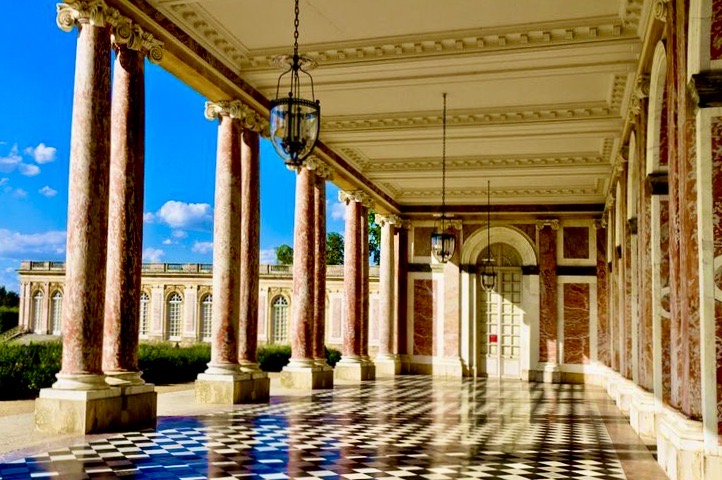
The Grand Trianon, built by Louis XIV in 1787, was used to accomodate the King’s “private affairs.” Photo courtesy of Château de Versailles.
Nearby, the Petit Trianon is a lovely neoclassical palace, completed in 1768 by Louis XV who was devoted to botanical science. The Trianon gardens were stocked with unusual, one-of-a-kind specimens. And, of course, the superb landscapes were a perfect site for the King to entertain his Fleur Préférée — La Comtesse Du Barry.
In 1783, Louis XVI gave the Petit Trianon to his wife, Marie-Antoinette, who famously built a small village hamlet — Hameau de la Reine — with a barn and working dairy. The gardens are peaceful and calm on this chilly morning. We would have stayed much longer, but our driver signals that it’s time to go. He drops us off at the Château and we thank him profusely for the “private” tour.
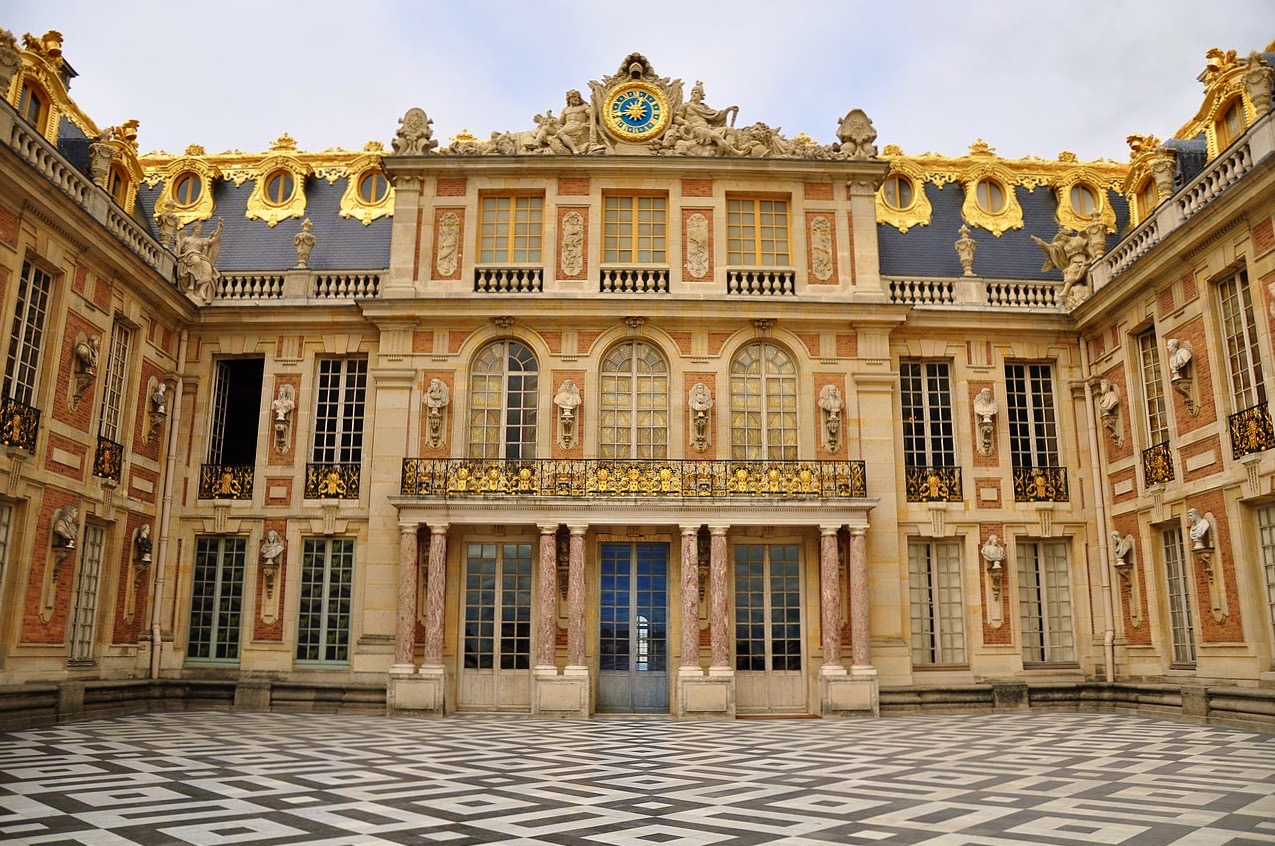
Cour de Marbre (Marble Courtyard) – Primary entrance to Château de Versailles. Photo courtesy of Château de Versailles
At the main entrance, a few tourists have gathered at the Cour de Marbre — within the vast, tiled courtyard, they seem like small chess figurines. We begin our tour at the Royal Opera. Versailles contains a staggering 2,300 rooms. We’re hoping to make it through a few dozen.
The Opera was one of the last buildings constructed at Versailles. Louis XIV had always wanted the venue, but was concerned about the cost of such an undertaking. Given the fact that most estimates for the palace are around $300 billion in today’s currency, his restraint was notable.
Louis XV also debated the value of an opera, but wanted a suitable site for the wedding celebrations of his grandson, Dauphin Louis (later Louis XVI and Austrian Archduchess Marie-Antoinette. It also seems that his mistress, Madame de Pompadour, a great patron of the arts, was keen on the project. Completed in 1770, the Versailles Opera is still ranked as one of the finest opera houses in Europe. Louis XV’s investment wasn’t in vain.
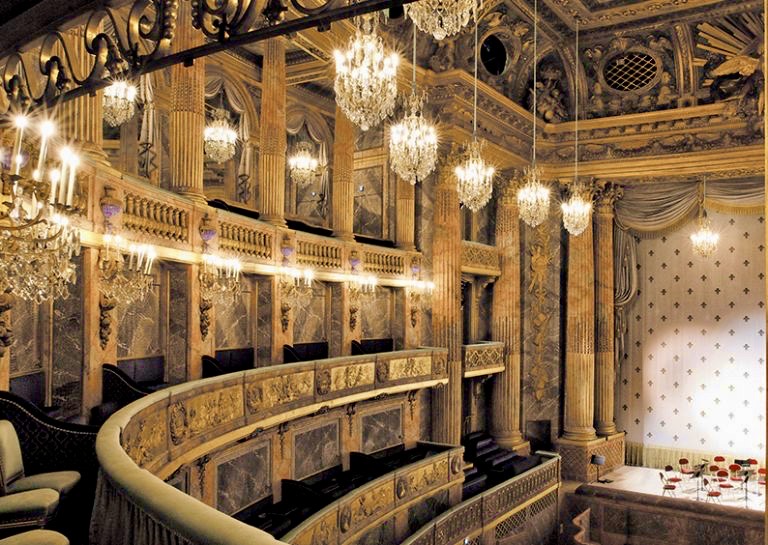
Completed in 1770, the Versailles Opera is still ranked as one of the finest opera houses in Europe. Photo courtesy of Château de Versailles.
From the Opera, we cross over to the Queen’s Apartments. At various times, three queens occupied the suites, with Marie-Antoinette the most famous of the trio. Here, the Chambre de la Reine (Queen’s Bedchamber) was the center of all activity. Here, the queen’s daily morning ceremony was governed by strict court etiquette.
The single most important event involving the Queens was, naturally, childbirth. In addition to numerous physicians, public witnesses were required to ensure the authenticity of the royal birth and lineage. Ladies in waiting, members of the royal family, church members, assorted aristocrats and nobles were on hand as well. In all, nineteen princes and princesses were born at Versailles between 1682 and 1786.
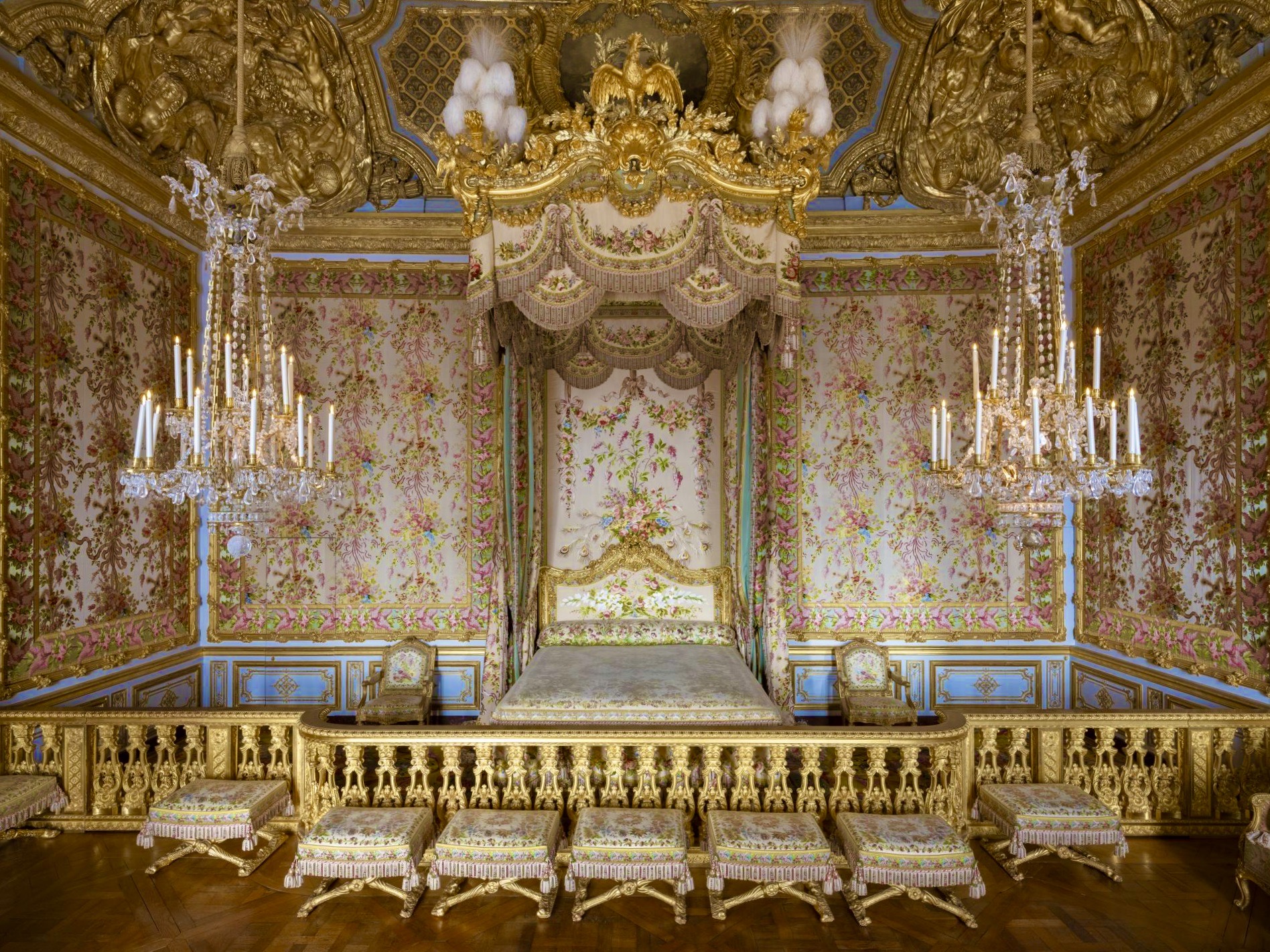
Chambre de la Reine (Queen’s Bedchamber) – Incredibly ornate and theatrical, afterall, it was here that the Queens dressed and even gave birth before a royal audience. Photo courtesy of Château de Versailles.
The Appartements du Roi (King’s Private Apartments) allowed the monarchs to escape the prying eyes of the court and to work discreetly with their ministers. Louis XIV displayed his private collection of paintings. Louis XV created the Dispatch Room to correspond with secret agents working for him abroad.
Louis XV also added a dining room for entertaining close associates. It was here that a young Mozart performed in 1764. Later, the room was regularly used by Louis XVI, Marie-Antoinette and their children.
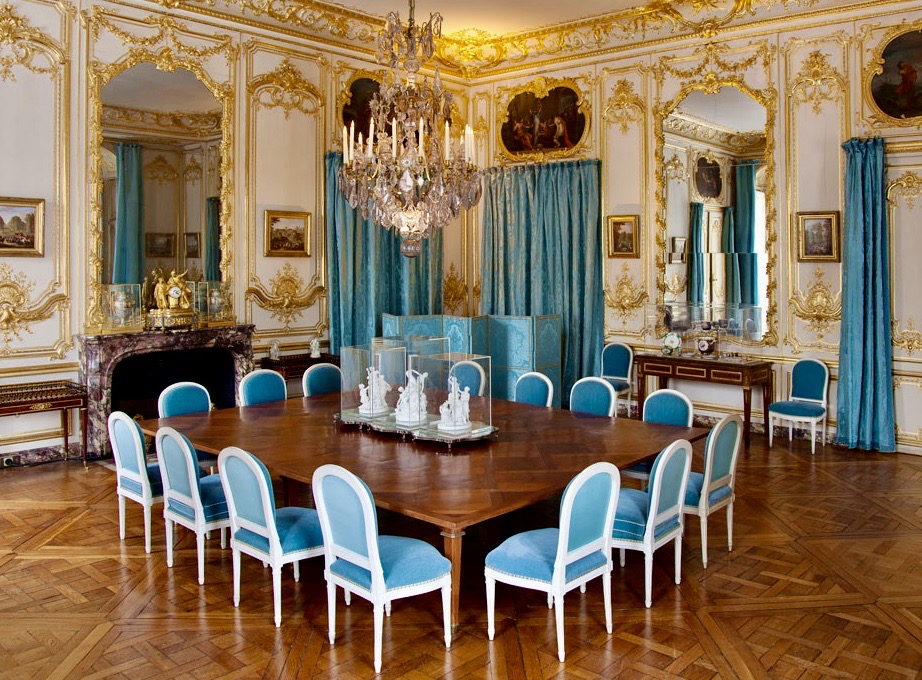
A dining room within the Appartements du Roi (King’s Private Apartments)
Ironically, on the eve of the French Revolution, Louis XVI commissioned the last renovation in Versailles — a clothes closet/dressing room, with intricate carved gilt molding and paneling — a last bit of vanity before his extraordinary fall from power.
From this very private area of the palace, we go to the Grands Appartements (King’s State Apartments) a series of seven rooms. Named for Roman gods, these chambers were used for both official events and very public daily routines.
The Mercury Room, with a spectacular mural depicting Mercury on his chariot pulled by two roosters, was originally designated as Louis XIV’s bed chamber. “Each morning, the King’s day would start with a Petit Lever (morning ritual) which included the premier valet, court physician and court surgeon. Thirty minutes later, a Grand Lever (public morning ritual) would include the most distinguished personalities of the court. The King’s daily routine thus ran like clockwork, concluding between eleven and midnight, for the ceremony of the Coucher (bedtime reitual).” (Versailles. Guillaume Picon)
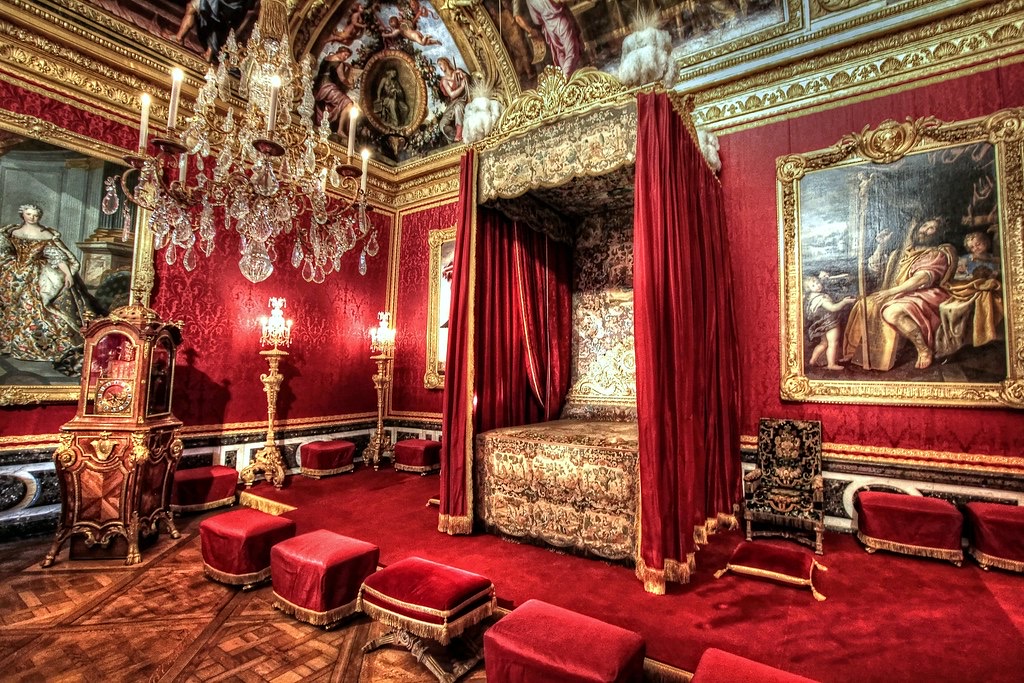
Louis XIV’s bedroom in the Grands Appartements (King’s State Apartments) where the King’s morning routine was controlled by strict court etiquette. Photo courtesy of Château de Versailles.
Our last stop of the day is the Galerie des Glaces (Hall of Mirrors). Built to commemorate a victory over Germany, Spain and the Dutch Republic, the room is a tribute to the geopolitical success of France. Gilt embossed paintings on the vaulted ceiling depict the history of Louis XIV; 43 crystal chandeliers with 1,000 candles blaze overhead. Most impressive, of course, are the 357 mirrors. The breathtaking display served as a demonstration of French glassmaking mastery in 1684, as well as a taunt to Venice, whose glass monopoly had flourished for over 500 years.
It’s the end of our lengthy tour. We linger in the glittering hallway imagining all the many personalities who have walked the 240-foot long expanse. All at once, we realize we’re the only two left in the room. It’s an odd moment. Will the spirits have something to tell us? We wait…
A young woman’s voice breaks the silence as a large group troops in to the fill the void. We snap a few more photos, trying to recapture the moment. But we know Versailles has more secrets than rooms… and that’s saying a lot.
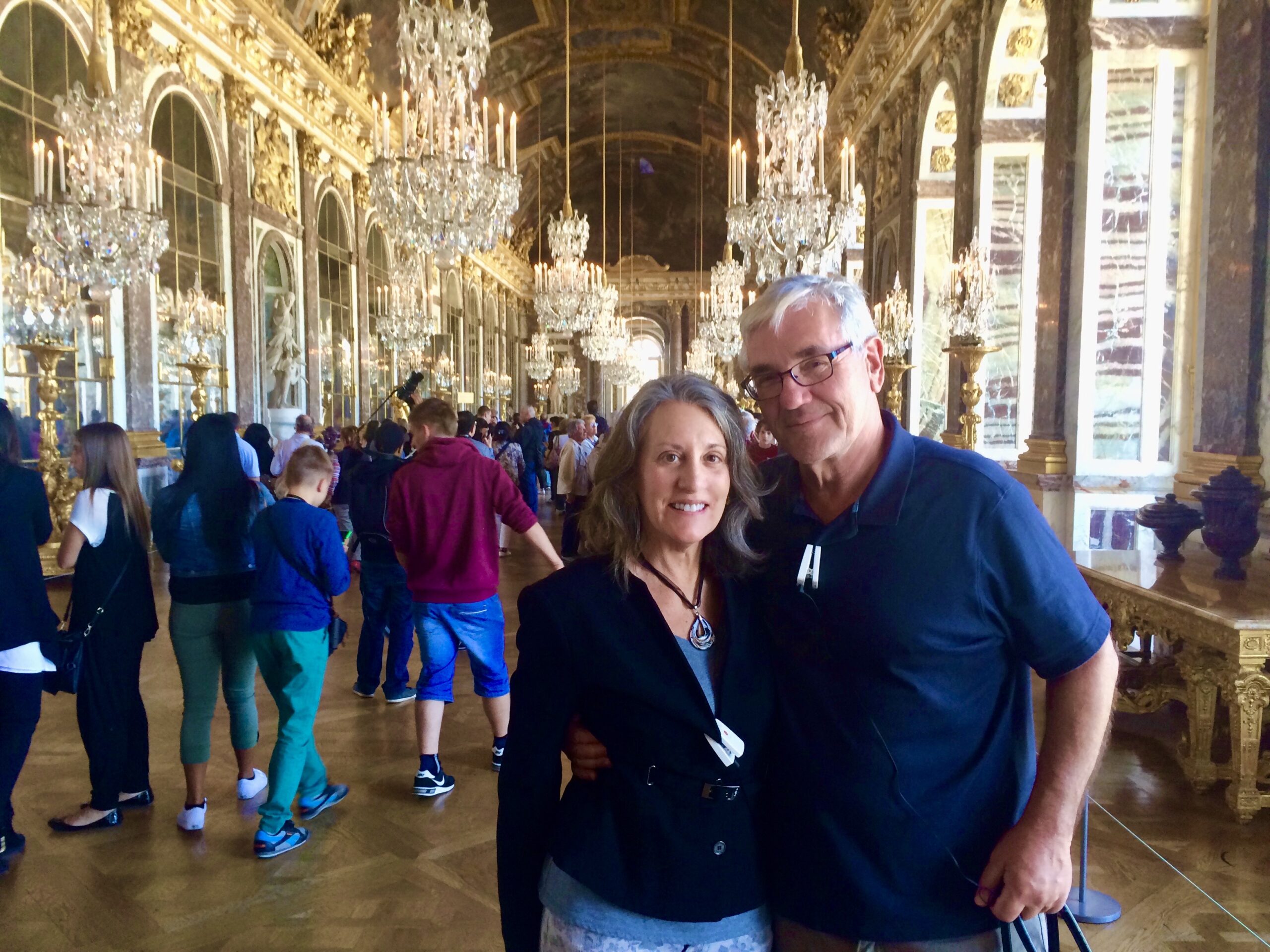
Galerie des Glaces (Hall of Mirrors) – 43 crystal chandeliers, 1,000 candles, 357 mirrors and an endless number of tourists to view them.
THE OTHER VERSAILLES
From Versailles, we walk to our hotel, the Trianon Palace. Built in 1910, the property is situated on 3 hectares (7.5 acres) of park adjoining Château de Versailles, very near the Grand and Petit Trianon Palaces. The palace has had a long distinguished history — first as a luxury hotel, then later as headquarters for the Inter-Allied Military Committee in World War I.
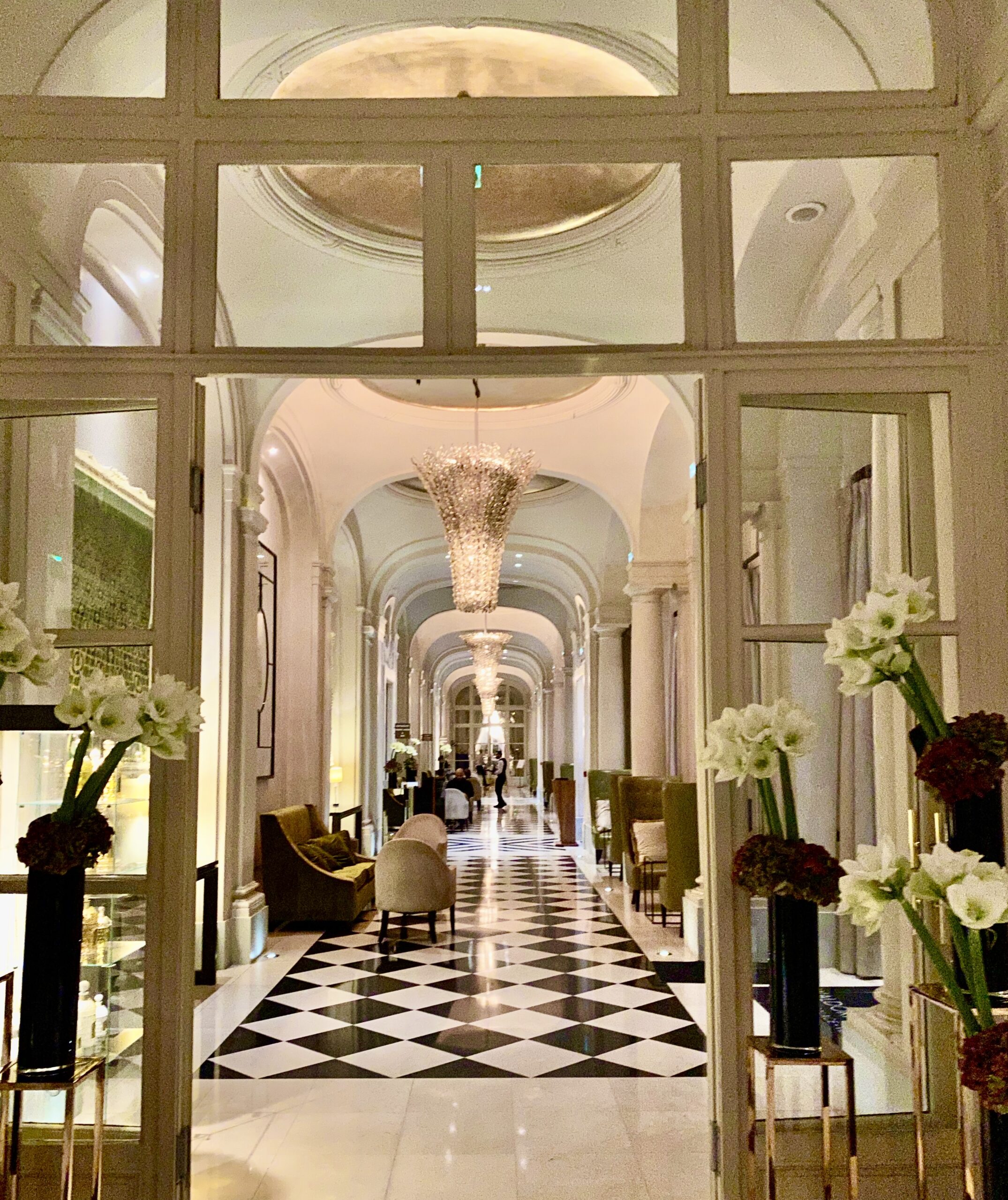
Lobby of the Hôtel Trianon Palace, situated on 3 hectares of park adjoining Château de Versailles. Photo by Marla Norman.
During World War II, offices for Allied Generals Eisenhower, Patton, Bradley, de Gaulle and Montgomery were set up at the Trianon. Ultimately, the Treaty of Versailles, ending World War II, was written here as well.
More recently, Hilton has taken on management of the prestigious hotel. Superb amenities are provided, including three restaurant options. After our very long day, we’re eager to relax over drinks and a great meal.
The following morning, we walk a few blocks to the city of Versailles. André Le Nôtre, famous for his monumental landscapes at Châteaux de Versailles, Fontainebleau and Chantilly as well as the Tuileries Gardens, designed the layout for the city itself.
With its spacious parks, grand homes and generous boulevards, many even wider than the Champs-Élysées (which Le Nôtre also designed) Versailles has always been appealing. More recently, the city has become known as one of Paris’ finest suburbs, attracting young families and new residents.
Our first destination today is Place du Marché Notre-Dame. One of Europe’s largest food markets, the Versailles Marché is spread out over four city blocks, with stall after stall of every epicurean delight imaginable: meats, fresh fish, produce and flowers. Four historic halls, dating back to Louis XV, are filled with wine from all over the world, sumptuous pastries and confections.
The market is such an overwhelming sensory experience, we hardly know where to begin. But, once we spot the cheese, we quickly get our bearings. We try Cabécou (French Pyrénées), Reblochon (Savoie), Valençay (Loire), Chaource (Champagne-Ardenne region) Ossau-Iraty (Basque), Mâconnais (Burgundy) and many more…. The cheese mongers are generous and work hard to out-do each other. Watching them compete is half the fun.
In the meat market, an array of pâté and foie gras is available along with hundreds of different sausages and even paella. In yet another part of the market, soaps, linens and ceramics are on display. Other sections offer antiques.
After several hours, we’re exhausted and, of course, famished! All the stimulation has given us an enormous appetite. The restaurant choices are as broad and varied as the market itself. It’s almost impossible to decide, but Lucette, a cute bistro specializing in seafood and shellfish, catches our eye.
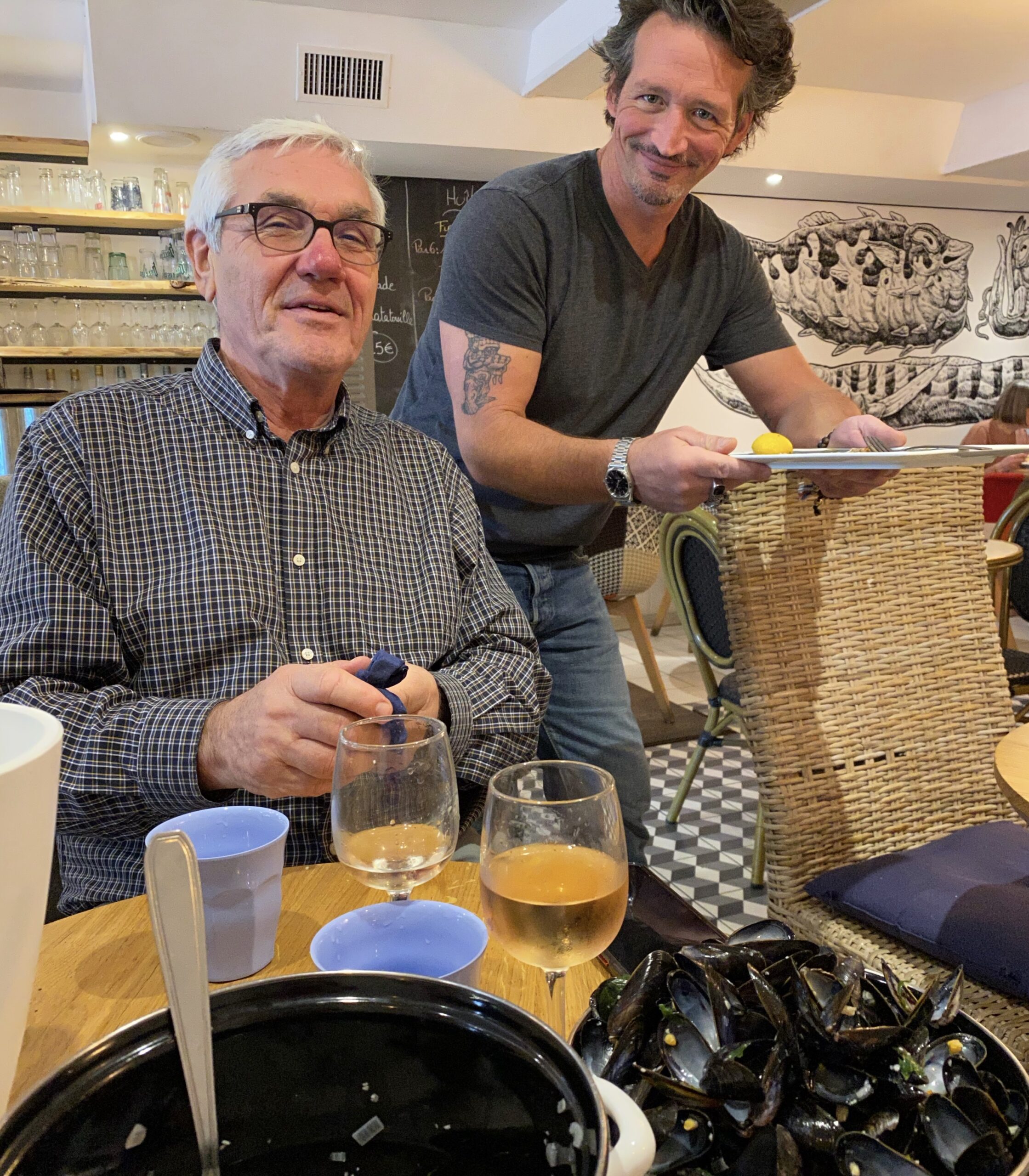
At Lucette, near the Place du Marché Notre-Dame, Michel enjoys a pot of moules et frites. Photo by Marla Norman.
The owner shows us to a corner table and within a few minutes, an enormous pot of mussels and fries sits before us. Divine! Even better are the Risotto with Prawns and Sea Bass with Purée de Maison (mashed potatoes with pounds of butter.)
The wine menu is limited, but well chosen. A crisp Savignon Blanc from Loire pairs perfectly with the fresh seafood.
Stuffed and happy, we stroll back to the hotel. It’s late afternoon and street vendors are closing their stalls. The boulevards are bustling. A stream of commuters exit the metro, eager to get home after work, or to grab a seat at one of the lively restaurants.
A light snow begins to fall and the entire city glistens — almost outshining the Château on the hill. After our weekend here, it’s easy to understand why Versailles has become such a popular neighborhod. From now on, our advice to travelers is come for the Palace, but stay to discover all the treasures of Versailles!





